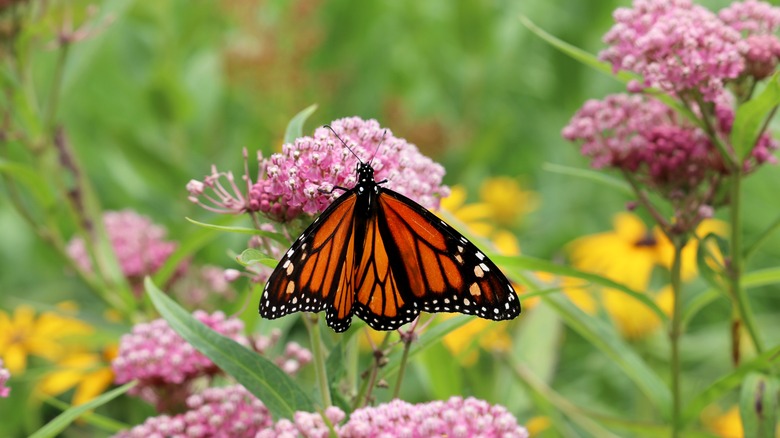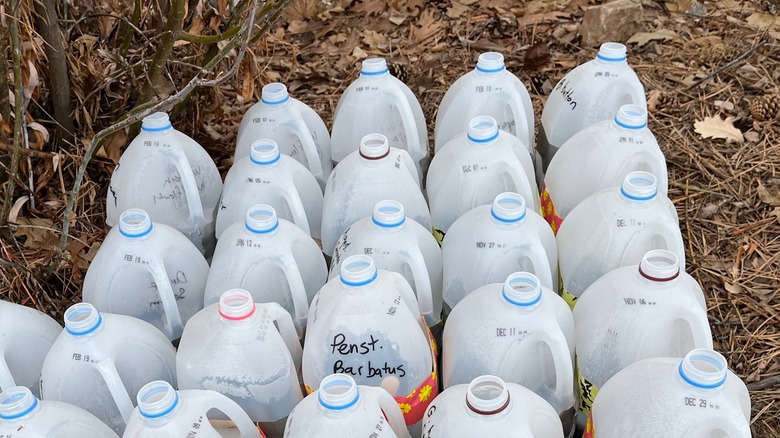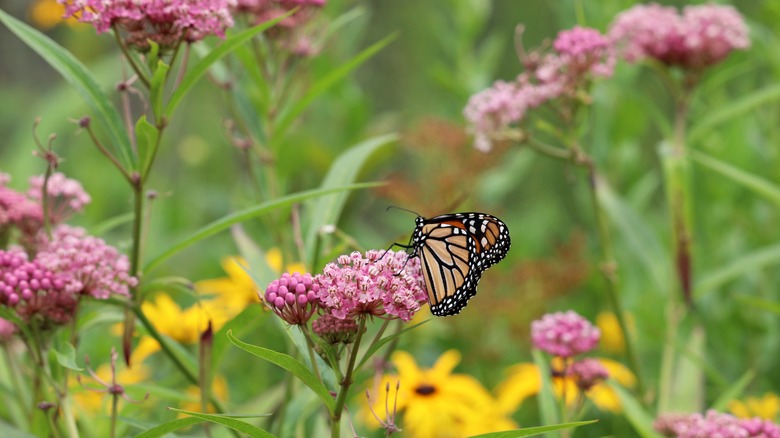The Best Time Of Year To Sow Milkweed Seeds For A Bountiful Butterfly Garden
Starting a butterfly garden offers you a natural flowery display while also inviting important pollinators to spend some time at yours and inhabit your space. If you know butterflies, then you would know that milkweed is a staple favorite among them. Butterflies like to feed on milkweed's delicious nectar, which is why they rarely pass up an opportunity to be near them. If you want to use milkweed to boost the butterfly activity in your yard, the best time to plant them is during the winter because the cold helps them germinate and grow faster.
Not only do milkweed plants help you realize your goal of attracting butterflies to your garden. They're also the only plant species that monarch butterflies will lay their eggs on, so you know you'll already have some guaranteed guests. During the winter is the perfect time to plant milkweed because it's less likely to succumb to extreme weather conditions like getting blown around by the wind. It's also safer from animals that gobble up the seeds such as milkweed beetles.
Cold breaks the milkweed seed's dormancy
Winter sowing milkweed is a crucial act that must be done to help the seed come out of dormancy by force. This process is called cold stratification and you'll be planting the seeds into damp soil in the middle of winter just before the holiday season. The idea is to create makeshift greenhouses for the seeds. You can use any plastic container such as a milk jug. Fill it with damp dirt and place the seeds inside. Leave the jug out in the winter cold until the spring when the seeds will start to germinate and develop. If you want to winter sow in an area that doesn't see as much cold, then you can use a paper towel, some water, and a ziplock bag to recreate the ideal germination environment. Simply wet the paper towel and wrap the seeds in it before sticking it into your refrigerator for about a month.
Keep in mind that only some types of milkweed strains can be winter-sown. The common milkweed (Asclepias syriaca) blooms with white and pink flowers, grows best in full sunlight, and does not like shade. Swamp milkweed (Asclepias incarnata) is a brilliant fuchsia and can tolerate a vast range of climate zones, but needs lots of water. If you live in an area that often experiences drought, then the orange butterfly milkweed (Asclepias tuberosa) is the garden plant for you.
Why milkweed butterfly gardens are beneficial
Cultivating your butterfly garden in the heart of your yard means not only are you helping the endangered population of monarch butterflies, but you are also boosting the yield of your other garden fruits and veggies. Butterflies are important pollinators in our ecosystem and their activity is vital for your other plants. However, there are things you have to consider before winter sowing milkweed seeds.
Sowing milkweed seeds in the winter will give you a helpful head start to a beautiful growing season, but you have to be prepared for the task ahead. Even if you choose to go with a milkweed variety that tolerates shade, you still need to situate your butterfly garden in an area where the sun touches frequently. Butterflies are cold-blooded and love to be sun-kissed to warm up. As much as possible, try to refrain from using fertilizers to accelerate the milkweed's growth. They can be poisonous to the butterflies. Also, butterflies don't just drink nectar — they need water, too — so, don't be afraid to set out a water source for the butterflies to quench their thirst.


